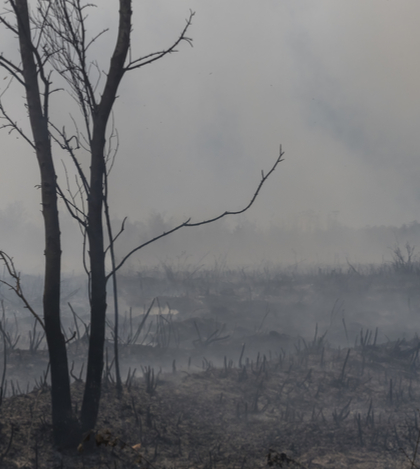In the wake of northern California’s deadly wildfires last month multiple agencies are now working ahead of pending storms and the rainy season to prevent post-fire floods, debris flow and pollution to local streams and waterways. Several local agencies are working both collaboratively and independently with a mutual goal of protecting human health as well as bridges, roads, culverts, flood protection facilities, wildlife and the natural environment including streams and waterways.
Authorities have assured the public that drinking water is safe and continually monitored in Sonoma County. However, the 617 streams in the fire-ravaged area are part of the natural watersheds that filter drinking water. Therefore, it is critically important that ash, debris and other pollutants are prevented from entering streams, storm drains, creeks and rivers to the maximum extent possible. Landslides are also a possibility due to increased rain runoff.
Cal Fire currently has three teams working in the Tubbs, Nuns and Atlas fire area in conjunction with California Geologic Survey. They have convened a Water Emergency Response Team (WERT) to rapidly assess the risks of landslides and flooding posed by the fire impacted zones. WERT is working with local agencies to assess and reduce the risk of flooding and to prevent the fire-related pollutants from entering the area’s vast waterways system. WERT’s partners include U.S. Forest Service, the State Department of Water Resources, the North Coast Regional Water Quality Control Board and the San Francisco Bay Regional Water Quality Control Board. Other WERT partners include Sonoma and Napa counties, the Sonoma County Water Agency, the Sonoma County Agricultural Preservation and Open Space District, Sonoma County Department of Transportation and Public Works, Sonoma County Regional Parks, Resource Conservation Districts along with the cities of Santa Rosa and Sonoma and a host of non-profit organizations and private partners.
The agencies are using hydrologic monitoring to assess watershed threats and to aid in establishing priorities for recovery actions. Sonoma County Agricultural and Open Space District and other partners are using data from NASA and other sources to track sources of pollution in the watershed that have the greatest possibility of moving into stream systems during the winter rainy season. The agencies are also assessing watershed to best protect the natural environment, native habits and the streams and forest habitats that support the state’s endangered salmon and steelhead species and other wildlife.
In urban areas, the city of Santa Rosa and Sonoma County, along with the Regional Water Board, are cleaning and checking storm drains, and installing straw wattles and sandbags to prevent debris from entering storm drains. Plans are underway capture, store and treat storm water runoff from the most impacted urban areas. In rural areas, the county is checking and installing debris-capture devices in culverts and ditches along rural roadways. The Sonoma County Agricultural Preservation and Open Space District is assessing district-owned properties for hazardous conditions including downed and damaged trees and areas where erosion may affect streams and watersheds.
A variety of resources are available to assist residents with questions and concerns regarding appropriate actions on their properties. Resident of the burn area are being cautioned to not wash ash into streets or drains.
- California’s Office of Emergency Services (OES) and the Federal Emergency Management Agency (FEMA) have developed a fact sheet for debris removal questions and answers at: wildfirerecovery.org.
- The Natural Resource Conservation Service (NCRS) and the Sonoma and Gold Ridge Resource Conservation Districts have developed tips for property owners to reduce erosion on their property and help prevent downstream flooding at: https://www.nrcs.usda.gov/wps/portal/nrcs/main/ca/newsroom/features/.
- Debris removal operations is being spearheaded by US Army Corps of Engineers. Two prime contractors — Ashbritt and Environmental Chemical — hired by the Army Corps will be using local contractors for their work. Local contractors can register as subcontractors at the primary contractor websites:
- All debris management info is available at the following Cal OES website: http://wildfirerecovery.org/debris-removal/.
 California Water News Daily Your Source For Water News in California
California Water News Daily Your Source For Water News in California


